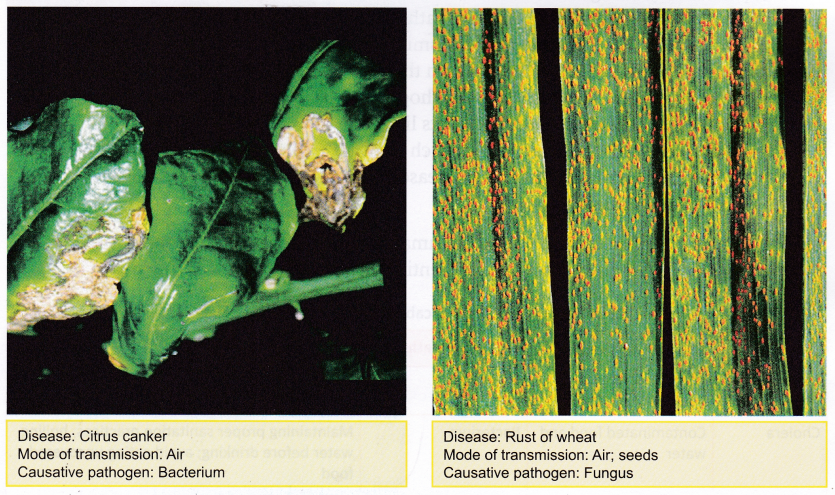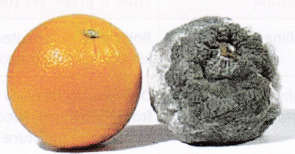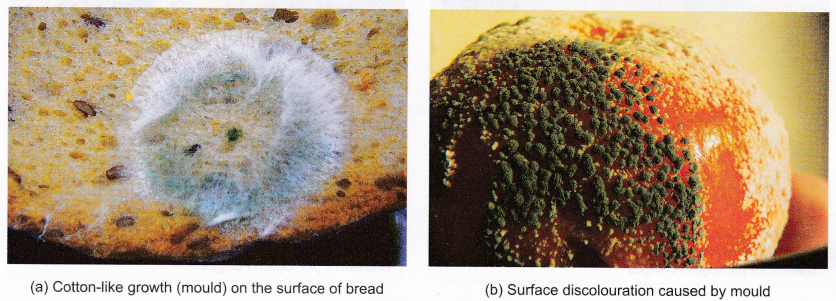Harmful Effects Of Microorganisms In Our Daily Life
Harmful effects of microorganisms can be divided into the following two categories:
- Causing diseases in human beings, animals, and plants
- Food spoilage
We will discuss each of these in detail.
Read More: Write a short paragraph on the harms caused by microorganisms
Disease-causing Microorganisms
Microorganisms that cause diseases in human beings, animals, and plants are called pathogens. Let us look at some of the diseases caused by pathogens in human beings, animals, and plants.
In human beings Pathogens enter the body of a healthy person through air, water, and food. They can also spread from an infected person to a healthy one. For example, when a person suffering from common cold sneezes, pathogens are released into the air. These pathogens may enter the body of a healthy person while breathing and he/she may also get common cold.
Pathogens also spread from an infected person to a healthy one through insects like the female Anopheles mosquito and housefly. For example, when a female Anopheles mosquito bites a person suffering from malaria, it sucks in the pathogens along with the blood. When the same mosquito bites a healthy person, the pathogens may enter his/her body and that person may also get infected with malaria. Similarly, when a housefly sits on garbage, pathogens may stick to its body. The same fly may transmit these pathogens to food items, when it sits on them.

When a person eats these food items, the pathogens enter his/her body and cause diseases. Insects like the female Anopheles mosquito and housefly, which transmit pathogens from an infected person to a healthy one, are known as carriers of diseases. Diseases that can spreadfrom one person to another are called communicable diseases.
Some common communicable diseases in human beings, along with their mode of transmission, causative pathogens, and preventive measures, are listed in table.
Disease | Mode of transmission | Causative pathogen | Preventive measures |
| Malaria | Bite of the female Anopheles mosquito | Protozoan | Not allowing mosquitoes to thrive in the locality; using mosquito nets and repellents |
Cholera | Contaminated food and water | Bacterium | Maintaining proper sanitation practices; boiling water before drinking; avoid eating uncovered food |
| Typhoid | Contaminated food | Bacterium | Maintaining proper sanitation practices |
| Tuberculosis | Air | Bacterium | Vaccination (for children) |
Ringworm | Direct contact with the infected person | Fungus | Good hygiene; not sharing personal items like towels and combs with infected person |
Common cold | Air | Virus | Washing hands regularly; avoiding close contact with people having common cold |
| Poliomyelitis | Air and water | Virus | Vaccination |
| Chickenpox | Air; physical contact with the infected person | Virus | Vaccination |
In animals Some animal diseases caused by pathogens are listed in table.
Disease | Affected animal | Mode of transmission | Causative pathogen |
Foot and mouth disease | Cattle | Contact with diseased animals; air | Virus |
| Rinderpest | Cattle | Contact with diseased animals; drinking contaminated water; air | Virus |
| Anthrax | Cattle | Grazing | Bacterium |
| Fin rot | Fish | Dirty water/injury | Bacterium/Fungus |
In plants Some plant diseases caused by pathogens are discussed below.


Microorganisms and Food Spoilage
Microorganisms like fungi and bacteria are responsible for the spoilage of various foodstuffs, including bread. The main conditions required for the growth of these microorganisms are a moderately warm temperature, air, and moisture. These microorganisms often produce poisonous substances, which make food unfit for consumption. Eating such foodstuffs can cause an illness called food poisoning.
Activity
Aim: To observe orange mould under a microscope.
Materials needed: Fresh orange, a bowl (with lid), glass slide with coverslip, forceps, glycerine, and microscope.
Method:
1. Take a fresh orange in a bowl. Cover the bowl with a lid.
2. Place the bowl in a warm place and leave it undisturbed for a week.
 Observation: You would observe a greyish growth (mould) on the orange. Carefully pick up a small sample of the mould with the help of forceps. Put a drop of glycerine on a clean glass slide. Place the sample on the glycerine drop carefully and put the coverslip Make sure there are no folds. With the help of your teacher, observe the sample under the microscope. Draw what you see.
Observation: You would observe a greyish growth (mould) on the orange. Carefully pick up a small sample of the mould with the help of forceps. Put a drop of glycerine on a clean glass slide. Place the sample on the glycerine drop carefully and put the coverslip Make sure there are no folds. With the help of your teacher, observe the sample under the microscope. Draw what you see.
Extension: You could repeat the same procedure with leftover bread slices and observe the structure of bread mould. Record if the structure of bread mould is similar to or different from that of the orange mould.
Here are a few things that can help us detect food that has become unfit for consumption because of microbial action: foul odour, slimy surface or cotton-like growth on the surface, surface discolouration, sour taste, and gas formation.

